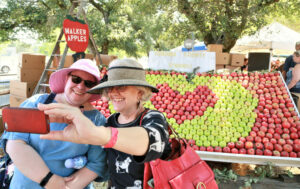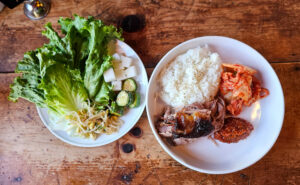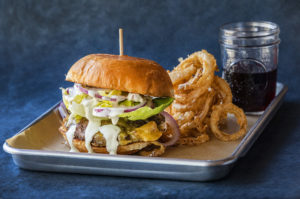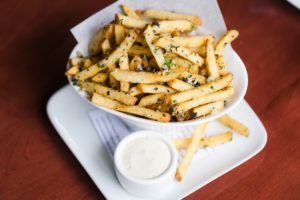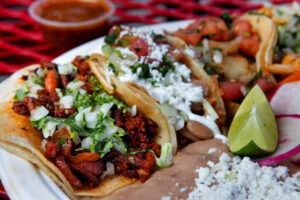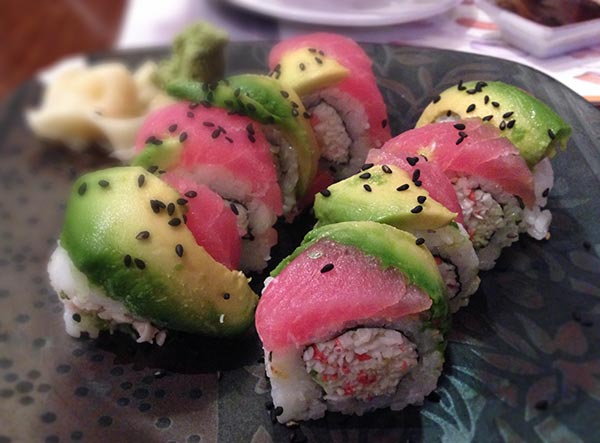Omakase. It’s one of those insider-y food words that’s supposed to make you sound really cool when you sit down at a sushi bar. It means “It’s up to you, chef,” in Japanese. A sign of respect and trust, the phrase gives a stranger carte blanche to choose what exotic and potentially dangerous foods you’ll be ingesting over the next 30 minutes or so. Not a word to be taken lightly.
“Omakase,” I practice silently mouthing the words. Omakase, omakase, omakase I think walking through the doors of Sam’s sushi bar in Bennett Valley, Yao-Kiku (2700 Yulupa Ave, Santa Rosa, 707.578.8180). I’m in your hands, esteemed sushi man. Make me what you will.
“Oka masy,” I mumble lamely to the 60-something Sam as he looks me over. Dead silence. He gives me one of those expressions that conveys both confusion and amusement. “Omkamse.” Omasake? He’s not getting it. “Uh, your choice,” I say, turning as red as the raw tuna in his chilled sushi case and speaking extra loud — as if that will help. “Just feed me. Uh, whatever. You know.” Out of pity, I think, Sam gets to work, pulling and pointing at hunks of meat — sake, uni, maguro.
Revealing your inner gaijin can be a scary thing. Sidling up to the bar and rattling off your best sushi pidgin feels ridiculous, no matter how earnest or experienced you are. Books tell you it’s smart and hip to say this stuff. I just feel goofy and embarrassed. Like when my dad once confessed to a random dim sum waitress, “We are not from here, we do not understand your customs,” on a rare, exotic visit to China Town. Ugh.
But if there’s anything I’ve learned in the two plus years since BiteClub’s original Sushi Smackdown, it’s that eating sushi is an intensely personal experience — a one-on-one relationship with the guy (and yes, it’s usually a guy) behind the counter. You can eat a whole lot of raw fish and never truly eat sushi.
So, consider this one gaijin’s advice to another, after eating at dozens of sushi joints from coast to coast — including more than twenty right here in Wine Country. I’ve done the dirty work so you can simply sit back and simply say, Omakase. Or whatever you want.
1. Grocery store sushi is best left to the pros (and midnight cravings): There is a difference. Low-end, premade sushi has its place, but it’s not the real deal. Great sushi starts with great rice — a process carefully guarded by chefs. The rice should be loosely packed and eaten at body temperature. Not cold. Or made the day (or several days) before. And I’m not even going to get into the fish. Best bets: Pacific Market is my go-to, but even then, I usually stick with California rolls. Most grocery outlets, by the way, use large sushi manufacturing companies like Southern Tsunami or Fujisan to supply their needs. They’re safe and usually reliable, but the flavor can really suffer.
2. Get to know your sushi chef: I can’t stress this enough. If you’re really going to eat sushi, make it a special splurge and spring for the best. Raw fish isn’t something to mess around with, not only because of its potential for spoilage but because it can also harbor some nasty little parasites. A good sushi chef will point you to the freshest stuff they have and stake his reputation on his selections. They’ll also help guide you to new tastes.
3. If it doesn’t taste right, don’t eat it: This seems like a duh, but I’ve made the mistake of eating raw scallops that seemed a bit off because I felt bad leaving them on the plate. Dumb move. Good sushi should taste clean and fresh and have almost no odor. Eat at establishments that have high fish turnover. One of my faves spots Gary Chu’s Sake’O, 505 Healdsburg Ave, Healdsburg, 707.433/2669.
4. Fresh vs. Frozen: This one’s a head-scratcher. According to FDA law, all fish to be consumed raw in the US is supposed to have been blast-frozen to kill off potential parasites. However, it’s up to the state to enforce this and California, according to my research, checks restaurants but doesn’t enforce the freeze rule for all fish. Salmon must be frozen because of its high potential for parasites, but other fish, like tuna, has less risk and isn’t always pre-frozen. This makes it taste better, but a bit more risky in untrained hands.
5. Nigiri vs. Sashimi vs rolls: Sushi actually means rice in Japanese. Nigiri is a rectangular(ish) bit of rice with fish on top. One order is two pieces. Sashimi are thin slices of fish without the rice. Rolls are a pet peeve of mine, meaning they’ve gotten way out of control. I realize that fried stuff slathered with mayonnaise sauce can taste good, but it’s not sushi. And there might be a reason they’re hiding the taste of the fish with all that stuff. Ick.
6. Wasabi: The hot green stuff that hurts your nose is probably not real wasabi at all, but a paste of horseradish and mustard with food coloring. Real wasabi can be quite expensive, but you can find hand-grated Oregon wasabi at Hana Japanese (in Rohnert Park), which has a sweeter, lighter flavor and grainier texture.
7. Soy sauce: The sign of a total amateur is pouring a big bowl of sauce, mixing in a bunch of wasabi so it makes a sort of greyish paste, then dunking your nigiri in the whole mess rice first. The best method is to pour a small amount of sauce into your bowl. Mix in a little wasabi if you must, but most good sushi chefs will season the sushi as they think it should be eaten.
8. Fingers or not: It’s totally kosher to eat nigiri with your fingers. Good sushi bars will offer you a hot towel before the meal to freshen your digits for just this reason.
9. The menu is just an outline: Feel free to ask questions and order just a few bites at a time. Order something new and different once in a while. Uni (sea urchin) is something I avoided for years because of its strange color and texture. It’s actually sweet, creamy and wonderful. Same with raw scallops. And monkfish liver.Yum.
10. Sake to me: You can drink anything you like with sushi, but sake is pretty traditional. I, personally, prefer Diet Pepsi. You may like hot tea. There’s no real right or wrong.
Top pick in the 2009 Sonoma County Sushi Smackdown
All around best:
I’ve given over the 2009 Top Sushi Spot to Hana Japanese Restaurant After having put in some serious time with the staff, my eyes are open to the wonders that sushi can truly be. Ken Tominaga and his staff get fresh fish flown in from Japan and beyond each day, and know how to handle it with artistry and care. The key here: Ask questions and show your enthusiasm. Your interest will be returned in kind. 101 Golf Course Drive, Rohnert Park, 707.586.0270.
Newcomers:
Since last time, there are a few newcomers including Toyo Japanese, 3082 Marlow Road, Suite B3, Santa Rosa, and the new Boathouse Sushi in Santa Rosa (2360 Mendocino Ave., Santa Rosa, (707) 546-7153, Tosaki Sushi, 799 Gravenstein Hwy, Sebastopol, 707.829.0892. Best of the bunch, however, is Gohan Japanese, 1367 North McDowell Blvd, Suite 150, Petaluma.
Still Solid:
Go-tos still include Ume (8710 Old Redwood Hwy, Windsor), Sushi Tozai (7531 Healdsburg Ave., Sebastopol)
Want more sushi recommendations? Check out my original Sushi Smackdown.



